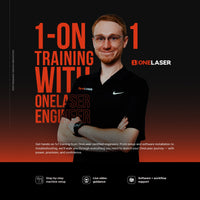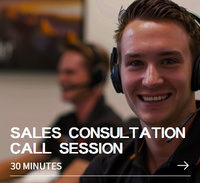Calibrating your laser engraver is one of the most important steps you can take to ensure clean, precise, and efficient work. Without proper calibration, makers often face misaligned cuts, wasted material, and extra production time. If you’ve ever had to guess where your engraving will land, struggled with inaccurate job placement, or slowed down projects with repeated framing tests, chances are your camera or machine needs calibration.
Key Takeaway
In this guide, we’ll walk you through how to calibrate laser engraver systems, specifically using the built-in camera with LightBurn software. You’ll learn why calibration matters, how to do it correctly, and tips to maintain accuracy for the long term. Whether you’re a beginner or an experienced maker, this article will help you understand the laser engraver calibration process and give you confidence in every project.
1. Why Calibrating a Laser Engraver Matters
Before jumping into the step-by-step tutorial, it’s worth exploring why calibration is so critical for your workflow.
- Eliminates Guesswork – When your camera isn’t calibrated, job previews rarely match the actual engraving position. You end up wasting time repositioning material.
- Prevents Wasted Stock – Misaligned cuts often mean ruined materials. Wood, acrylic, leather, or specialty stock can get expensive. Proper calibration saves money.
- Speeds Up Workflow – Instead of running multiple “framing tests,” calibration ensures that the on-screen preview matches the laser’s cutting area.
- Boosts Professionalism – Clients expect clean, centered engravings. Calibration makes your jobs more accurate and consistent.
Simply put, a small investment of time in calibration saves hours of frustration later.
2. Tools You’ll Need
To calibrate laser engraver cameras using LightBurn, you’ll need:
- Your OneLaser machine
- A computer with LightBurn software installed
- USB cables (one for the machine, one for the camera)
- A printer to print the calibration pattern
- Standard paper for the pattern
Once you have everything ready, follow the step-by-step guide below.
3. How to Calibrate Laser Engraver with LightBurn
Here’s the exact process to get your machine camera aligned and distortion-free.
Step 1. Power Up Your Devices
Start by turning on your laser engraver. Then turn on your computer. Both need to be running before LightBurn can connect to them.

Step 2. Connect the Cables
- Plug the provided USB cable from your computer into the laser engraver.
- Plug the camera’s USB cable into your computer as well.
This ensures LightBurn can recognize both devices simultaneously.

Step 3. Launch LightBurn Software
Open LightBurn on your computer. This is the control center for your laser engraving workflow.
Step 4. Open Camera Calibration Tool
- In the top menu, click Laser Tools.
- From the dropdown, select Calibrate Camera Lens.
- A new calibration window will appear.

Step 5. Select Calibration Pattern
LightBurn will ask for a calibration pattern. For this tutorial:
- Choose the circles pattern option.
- For lens type, select fisheye lens (most lid-mounted cameras use this).

Step 6. Download and Print Pattern
Click the link to download the calibration pattern. Open the file and print it out on a sheet of paper. This printed pattern allows the software to map and correct lens distortion.

Step 7. Place Pattern on Workbed
Place the printed circles pattern flat on your laser bed. The camera will read this sheet from multiple angles to learn how your lens distorts images.

Step 8. Capture Angles
Move the pattern around your workbed so the camera can see it from different positions. LightBurn will capture each angle until calibration is complete.

Step 9. Align the Camera View
Since the camera is mounted on the lid, select the correct option in the setup wizard. LightBurn will then ask you to run a test engraving.

After this test mark is made, you’ll align your camera view with the engraving. This step ensures the preview lines up with your actual laser work area.

Step 10. Finish Calibration
Once the wizard finishes, your camera is officially calibrated. From now on, the LightBurn preview will match your engraver’s real output.

No more guesswork. No more wasted stock. No more slow framing.
4. Tips for Accurate Laser Cutting Machine Calibration
Now that you know how to calibrate laser engraver, here are some practical tips to get even better results:
- Print on white paper – Dark or colored paper may reduce accuracy.
- Ensure good lighting – Avoid shadows when capturing the circles pattern.
- Clean your camera lens – Dust or smudges can affect calibration.
- Secure your calibration pattern – Tape it down so it doesn’t move while capturing angles.
- Repeat calibration if needed – If you move or replace your camera, recalibrate for best results.
- Check alignment monthly – Regular calibration ensures ongoing precision.
5. Common Issues with Laser Engraver Calibration
Sometimes things don’t go perfectly. Here are common issues and fixes:
- Camera not detected – Recheck your USB cable connections and restart LightBurn.
- Pattern not recognized – Make sure your printed circles are not blurry or resized incorrectly. Always print at 100% scale.
- Engraving misaligned after calibration – Rerun the alignment step carefully. Make sure the test engraving is visible and properly lined up.
- Software freezing – Close other heavy applications when running calibration.
6. How Often Should You Calibrate Your Laser Engraver?
Most makers only need to calibrate once. However, you should recalibrate if:
- You move the camera or machine.
- The camera angle changes (e.g., lid adjustment).
- You notice misalignments in job placement.
- You replace your laser’s lens or camera.
For heavy daily use, checking calibration every 1–2 months ensures continued accuracy.
7. Benefits of Properly Calibrated Camera
After completing laser cutting machine calibration, you’ll notice:
- Perfect alignment between on-screen previews and actual engravings.
- Faster job setup with minimal test runs.
- Reduced material waste.
- More consistent and professional results.
- Increased confidence in every job.
8. Professional Support for Calibration
If you get stuck, don’t worry—many brands (like OneLaser) provide U.S.-based R&D support and one-on-one sessions with engineers. A trained technician can guide you through calibrate laser engraver steps live.
Engineer 1-on-1 Training and Support
Community forums and maker groups are also a great resource. Sharing calibration experiences helps others avoid mistakes and saves time.
Join Our ForumJoin Our Facebook Group
9. Maintaining Your Laser Engraver for Accuracy
Calibration is only one part of keeping your engraver accurate. Here are a few maintenance habits:
- Regularly clean mirrors and lenses – Dust reduces beam precision.
- Check focus lenses – Some machines, like the Hydra Series, allow quick-switch lenses for different materials. Always recalibrate focus when swapping.
- Adjust airflow – Clean cuts need balanced air assist to avoid burns.
- Inspect belts and rails – Loose belts cause misalignment even if the camera is calibrated.
10. FAQs
1. How do I know if my laser engraver needs calibration?
If your LightBurn preview doesn’t match where the laser actually engraves, or if jobs look misaligned, it’s time to calibrate.
2. Do I need special equipment to calibrate?
No. All you need is your laser engraver, LightBurn software, USB cables, and a printer for the calibration pattern.
3. How long does calibration take?
Usually about 15–30 minutes, depending on your familiarity with the software.
4. Will calibration improve cut quality?
Calibration mainly improves accuracy of placement, not cut depth. For better cut quality, also check focus, power, and air assist.
5. How often should I repeat calibration?
Only when you move the camera, change machine parts, or notice misalignment. For frequent users, monthly checks are recommended.
Learning how to calibrate laser engraver machines isn’t just a one-time task—it’s an essential skill that saves time, money, and frustration. With a properly calibrated camera, your on-screen preview matches the real engraving area, giving you precise placement every time.
Instead of wasting stock on trial runs or slow framing, you can focus on creativity and production. Whether you’re engraving wood signs, cutting acrylic earrings, or personalizing leather patches, calibration keeps your workflow smooth and professional.
Take 15–20 minutes to calibrate today, and you’ll gain hours of efficiency tomorrow.

 Liquid error (sections/image-banner line 171): invalid url input
Liquid error (sections/image-banner line 171): invalid url input






